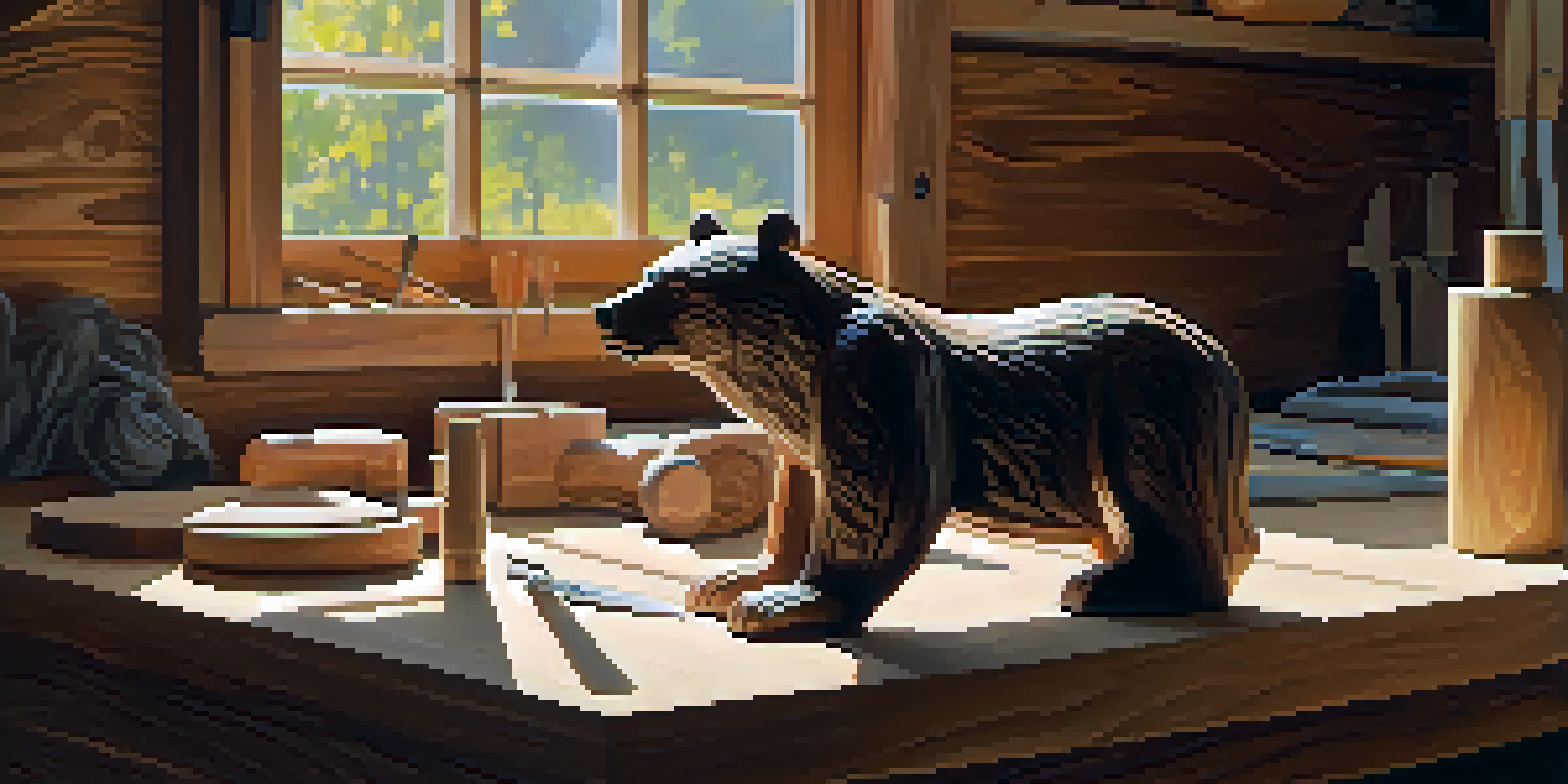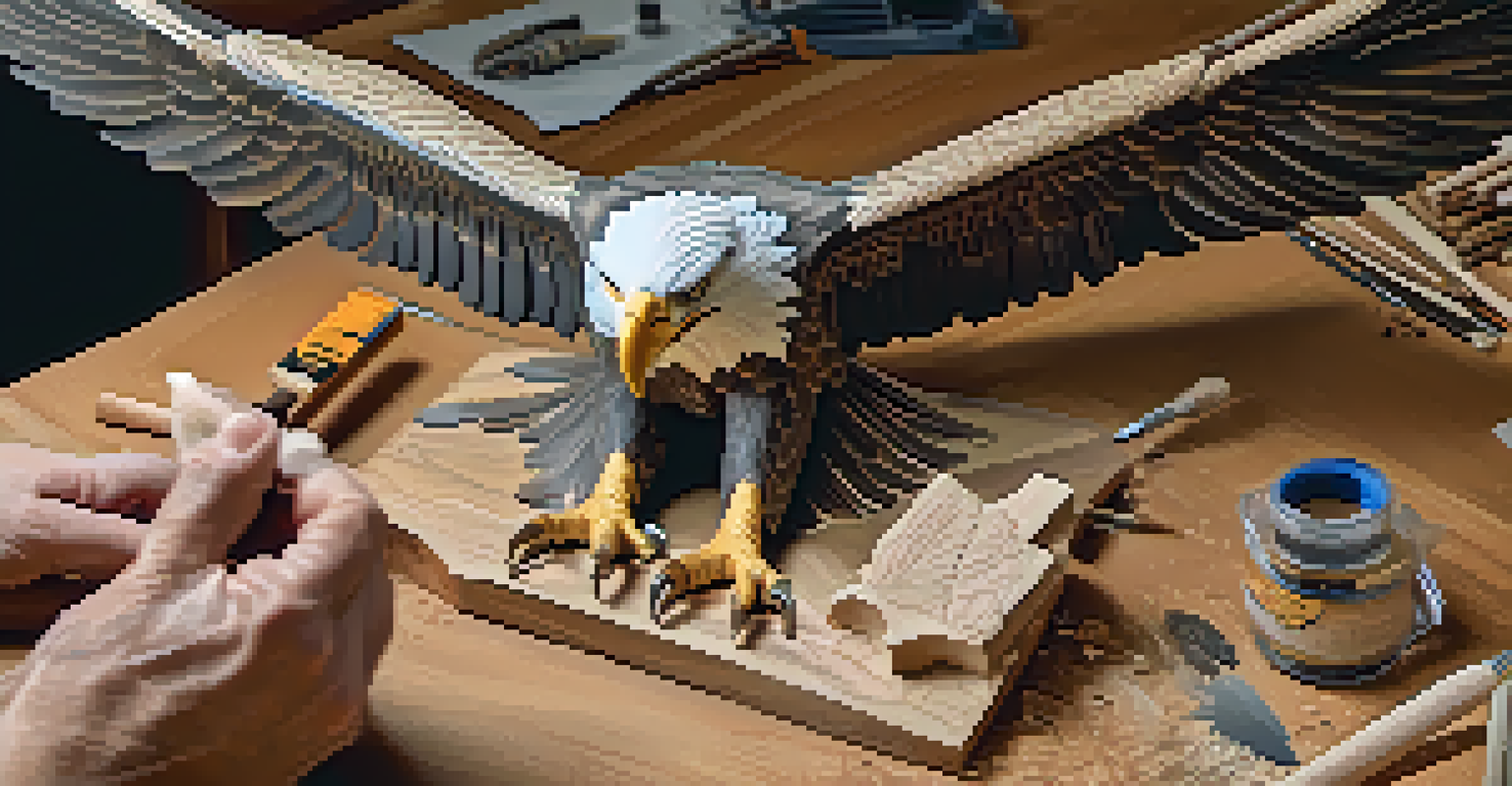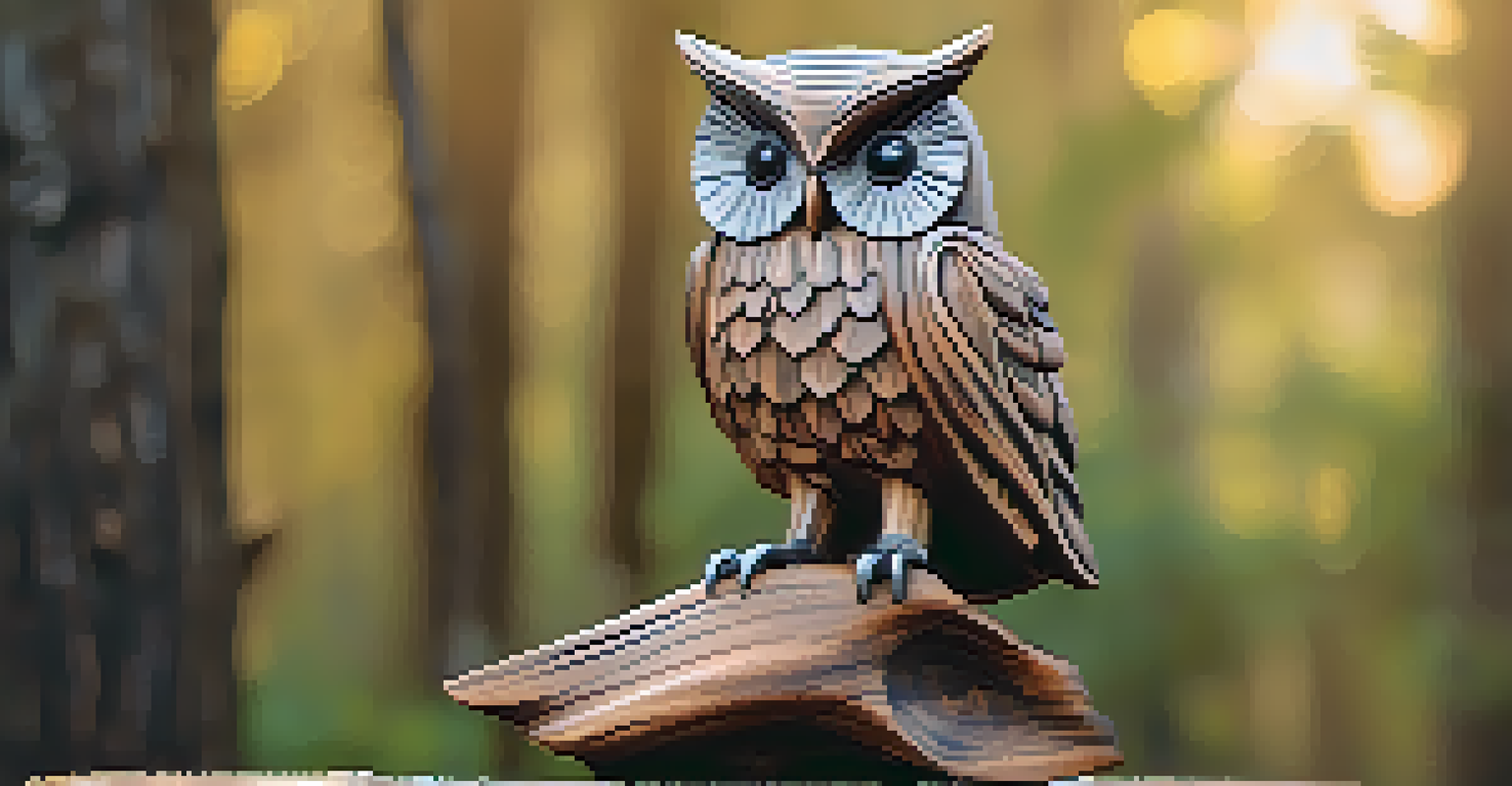A Guide to Animal Carving: Tools and Techniques for Beginners

Understanding Animal Carving: A Brief Overview
Animal carving is a fascinating art form that involves shaping wood or other materials into lifelike representations of animals. This craft has roots in various cultures, often reflecting the connection between humans and wildlife. Whether you're looking to create a simple figurine or a complex sculpture, understanding the basics is crucial for success.
Art is the most beautiful of all lies.
As a beginner, it’s helpful to start with an idea of what you want to carve. Do you envision a sleek dolphin, a majestic eagle, or perhaps a cuddly bear? Your choice will influence the tools and techniques you’ll need. Observing real animals or studying photographs can also inspire your designs and help you capture their essence.
The joy of animal carving lies in the process of bringing your vision to life. With patience and practice, you’ll discover that each piece not only becomes a work of art but also a reflection of your creativity and dedication.
Essential Tools for Animal Carving Beginners
To get started with animal carving, you’ll need a few essential tools that are user-friendly and versatile. Common tools include carving knives, chisels, and gouges, as well as a cutting board for safety. Investing in a good set of carving tools can make a significant difference in your experience, allowing for more precise and enjoyable carving.

For beginners, a whittling knife is a great choice because it’s easy to handle and perfect for creating simple shapes. As you advance, you might incorporate more specialized tools, like V-tools for detailing. Remember to keep your tools sharp; a well-maintained tool not only performs better but also ensures your safety while carving.
Start with the Right Tools
Essential tools like carving knives and chisels are crucial for beginners to create animal carvings effectively.
Finally, don’t forget about safety gear—wearing protective gloves and goggles can prevent accidents. Having a dedicated workspace, free from distractions, will also help you focus and enjoy the carving process.
Selecting the Right Wood for Your Carvings
Choosing the right type of wood is crucial for creating beautiful animal carvings. Softwoods like pine and basswood are popular among beginners due to their ease of carving and availability. These woods allow you to work more freely, especially when learning the ropes of animal shaping.
Every artist was first an amateur.
Hardwoods, such as oak or walnut, offer durability and fine grain patterns but can be challenging for novice carvers. If you’re unsure where to start, consider purchasing a carving block specifically designed for beginners. Experimenting with different types of wood can also help you understand how each one behaves during the carving process.
Ultimately, the right wood will enhance your project, making it more enjoyable and successful. Don’t hesitate to ask local craft stores or other carvers for recommendations on the best wood choices for your specific animal carving.
Basic Techniques for Shaping Animal Figures
When you're ready to start carving, mastering basic techniques is key to achieving your desired results. Start with roughing out the basic shape of your animal, which involves removing large amounts of wood to form the general outline. This initial stage sets the foundation for the finer details that will come later.
Once the basic shape is established, you can begin refining the features, such as the eyes, ears, and limbs. Techniques like stop cuts and pushing cuts will help you create more defined lines and curves. Experimenting with different angles and pressure will give you a feel for how your tools interact with the wood.
Choose the Best Wood
Selecting the appropriate wood, such as softwoods like pine, is vital for simplifying the carving process.
Lastly, take your time and be patient with yourself. Carving is an art that develops over time, and each piece will teach you something new. Celebrate your progress, and don’t shy away from making mistakes—they’re often the best teachers in the world of crafting.
Adding Details: Texturing and Finishing Touches
Once the main shape of your animal is complete, it’s time to focus on the details that bring your carving to life. Adding texture can make a significant difference; you might want to give the fur of a bear or the feathers of a bird a realistic touch. Tools like detail knives and texturing chisels are perfect for this stage.
Another important aspect of detailing is sanding. Using fine-grit sandpaper can smooth out any rough edges and prepare your piece for finishing. This step not only enhances the appearance but also contributes to the overall quality of the carving—no one wants splinters!
Finally, consider how you want to finish your carving. Options include wood stain, paint, or simply applying a clear sealant to showcase the natural beauty of the wood. This finishing touch not only protects your work but also adds a personal flair that reflects your style.
Inspiring Examples of Animal Carving Techniques
Looking at inspiring examples of animal carving can ignite your creativity and provide guidance. Many artists share their work online, showcasing various styles and techniques that range from realistic to abstract. Observing their methods can help you understand how different tools and approaches come together in a finished piece.
You might find video tutorials particularly helpful, as they demonstrate the carving process in real-time. Watching someone carve a majestic eagle or a playful puppy can provide insights into the nuances of technique and design. Plus, it can be motivating to see what’s possible as you develop your skills.
Practice and Maintain Skills
Regular practice and tool maintenance are key to improving carving techniques and ensuring a smooth crafting experience.
Don’t hesitate to join local carving groups or online forums where you can share your work and get feedback. Engaging with a community of fellow carvers can be incredibly inspiring, providing you with new ideas and tips to enhance your own projects.
Maintaining Your Tools and Carving Skills
As you delve into the world of animal carving, maintaining your tools is just as important as learning new techniques. Regularly sharpening your knives and chisels will ensure they perform at their best, making your carving experience smoother and more enjoyable. A dull tool can lead to frustration and even accidents, so make this maintenance a part of your routine.
Additionally, practice is essential for honing your skills. Set aside time each week to carve, even if it’s just for a short while. The more you carve, the more comfortable you’ll become with your tools and the wood, leading to improved techniques and creative ideas.

Lastly, don’t forget to reflect on your progress. Keeping a carving journal can help you track what you’ve learned and the challenges you’ve faced. This reflection not only boosts your confidence but also enhances your understanding of your artistic journey.